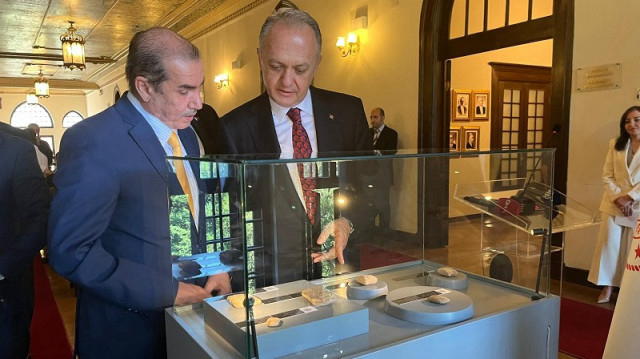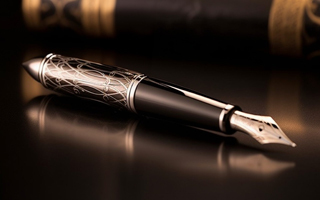
Tablets containing economic and administrative content dating back to Third Dynasty of Ur, Old Akkadian and Old Babylonian periods handed over to Iraqi authorities at ceremony in Ankara
Türkiye's Culture and Tourism Ministry returned six cuneiform clay tablets Monday to Iraqi authorities within the scope of protecting cultural assets and combating smuggling.
The tablets contain economic, administrative and religious content dating back to the Third Dynasty of Ur and Old Akkadian and Old Babylonian periods.
A handover ceremony for the artifacts was held at the Republic Museum in the Turkish capital Ankara with the participation of Deputy Minister of Culture and Tourism Gokhan Yazgi and Iraq's Ambassador to Türkiye Majid Abdulreda Hassan Al-Lachmawi.
In his speech at the ceremony, Yazgi said that Türkiye continues to show the same sensitivity towards the historical and cultural values of other nations as it does towards its cultural heritage.
"The contents of the tablets, the writing styles and the terminology used are directly related to the centers in southern Iraq.
“These tablets are unique documents in terms of scientific and cultural aspects, providing a wide range of information from daily transactions to priest lists and valuables records," he added.
Yazgi said Türkiye acts in full compliance with UNESCO's 1970 Convention and UN Security Council resolutions 1483 and 2199, adding that "fighting against the illegal circulation of cultural assets is only possible with the joint will and cooperation of the international community, not only with national legislation.
"Today's return is more than a well-intentioned gesture, it is a reflection of international law and cultural responsibility. In this context, the number of cultural assets returned by Türkiye to Iraq has reached 97, with four artifacts in 2010, 81 artifacts in 2019, six artifacts in 2022, and six tablets in 2025."
Yazgi also expressed a wish that the return of the tablets would further strengthen the cultural cooperation between Türkiye and Iraq.
Lachmawi thanked Türkiye for its cooperation and support for the successful return of the artifacts.
Describing their return as a gesture, he highlighted that this reflects the two countries' common determination to protect cultural heritage and combat illegal historical artifact smuggling.
The return of the artifacts is not only a contribution to Iraq's historical heritage but also a sign of the spirit of friendship and mutual respect that continues to develop bilateral relations, he added.
Emphasizing that they look forward to continuing their cooperation with Ankara in areas of common interest, Lachmawi emphasized that they find Türkiye's efforts to protect and recover Iraq's cultural heritage valuable.
The artifacts contain economic, administrative and religious content.
One of the tablets was found to be from the period of the Third Dynasty of Ur, dated to the 22nd to 21st centuries BC and written in the Sumerian alphabet. It was determined that the tablet contained a list of mostly priestly names and that the writing style and terms used pointed to southern Iraqi centers such as Umma.
Another tablet lists sheep and goat species in the writing system of the old Akkadian period dated to the 24th to 23rd centuries BC and records the payments made for these animals. The text in question is considered an example of an economic document.
Another tablet, arranged for daily transactions, dates back to the years when King Ibbi-Sin of the Third Dynasty of Ur ruled (21st century BC). The writing style and content are similar to typical administrative documents of the period.
The analysis and historical classification of the artifacts were carried out by Prof. Selim Ferruh Adali.







